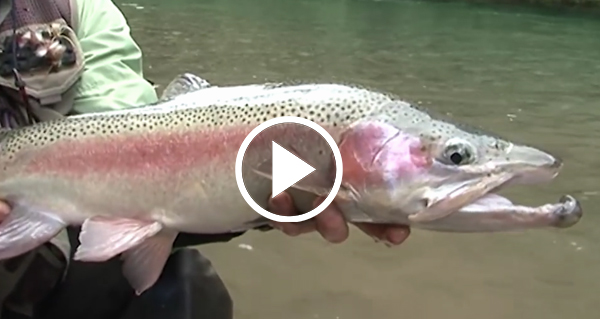Where does 1080 poison go in water?
Published in The Greymouth Star 24/9/19
By Dr Jo Pollard, BSc (Hons), PhD
1080 poison is currently being spread across New Zealand’s wildlands, in taxpayer-funded operations aimed at pest mammals. One of the extremely dangerous properties of 1080 is a marked ability to spread in water.
In a 2007 application to carry on using 1080, poison users the Department of Conservation (DoC) and the Animal Health Board (now TbFree):
“clarified that the breakdown of 1080 in the aquatic environment would be better described as dilution”
The poison users showed little concern about this spread:
“[the applicants] stated that the important thing was that 1080 residue levels in surface water are usually too small to be detected”
Small doses of 1080 can cause damage to organs such as the heart and brain, impaired reproduction and birth defects. Alarmingly, the United States Environmental Protection Agency considered that effects of 1080 might occur at concentrations too low to detect. In New Zealand, scientists Foronda and colleagues wrote in 2007 “one of the major gaps in knowledge surrounding 1080 is its potential toxicity upon chronic low-dose exposure, and subsequent long-term effects on human health.”
1080 can be very persistent. Laboratory studies showed it is most stable in cold conditions and where there are few living things to metabolise it. In sterile water it has an expected half-life of 4 years. It persists in carcasses and dry places, and may possibly persist wherever it reaches very low concentrations. Almost nothing is known of the rates of breakdown of 1080 in water under NZ outdoor conditions.
Worryingly, groundwater contamination with 1080 seems to be a risk. Scientists Srinivasan and colleagues warned, in 2011:
“In catchments where the water table could rise towards the surface during rainfall events, infiltrating 1080 could reach the groundwater before appreciable degradation.”
Srinivasan et al. also showed that leached 1080 from baits on land was likely to reach nearby streams, especially in very wet conditions.
Breakdown does not necessarily mean that 1080 poison has become harmless. The process is poorly understood. Breakdown products identified so far include highly toxic fluorocitrate (produced in poisoned plants and animals), fluoromethane, fluoride ions and glycolate. Environmental effects of breakdown products were not considered when 1080 use was reviewed in 2007.
Serious issues with water contamination arose in the 2007 review of 1080 but were ultimately ignored by the reviewing body, the Environmental Risk Management Authority (ERMA). One was the acknowledged risk of (potentially heavily) poisoned carcasses causing chronic, unpredictable and unmonitored contamination of waterways.
Another issue was the risk of wide, uncontrollable contamination. Statements by ERMA included:
“1080 is relatively soluble, so the likelihood of drinking water residues is relatively high”; “Since 1080 is highly water soluble, the Agency assumes that it would be difficult to remove by treatment processes”; “If a major spill into a waterway occurred, the spread may be uncontrollable”.
ERMA also noted issues with tests for 1080 in waterways after poisoning operations. There had been only a few positive results, but the water samples had been variously bulked together, taken late and poorly preserved both in the field and during storage. Although ERMA stated “it is essential that the issue of stability of 1080 in stored samples is resolved”, this had still not been done in 2015. The issues with unreliable tests were not acknowledged by the Parliamentary Commissioner for the Environment who stated in 2011 that “we do not need more water samples.”
A fourth water issue that ERMA dealt with irresponsibly was contamination of freshwater animals gathered for human food. By ERMA’s reckoning a child that consumed 200g of contaminated koura might be exposed to “an unacceptable risk level”. The risk of poisoning from freshwater species was calculated to be relatively high, compared to terrestrial meat, but ERMA stated “The Agency considers this conclusion misleading. A prime aim of 1080 operations is to avoid deposition of baits into waterways.” But small waterways, that are included in 1080 drops, are prime habitat for koura and eels.
How long 1080 lasts in the bodies of freshwater food animals is unknown. In short-term studies, contaminated trout, eels and koura still contained 1080 when the experiments ended. Carcasses or dried baits might enter the food chain at any time. Trout and eels could travel far from a poison zone.
The answer to: “Where does 1080 go in water?” may well be “Everywhere”.
Related videos
Auckland’s water supply – Hunua dams – poisoned again
Auckland’s water supply is about to be poisoned again. Here’s what they’re in for ..
Trout Mass-Poisoning in New Zealand
New Zealand has some of the best trout fishing in the world! Every year, thousands of international visitors wade pristine rivers in search of the freshwater game fish.
1080 Poison Dropped Directly into Auckland’s Water Supply
The Auckland Council stated in its pacifying document that it used “highly accurate GPS application technology to apply bait”.
The truth is that GPS technology was used to ensure every stream and watercourse within the drop boundaries were spread with 1080 poison.






